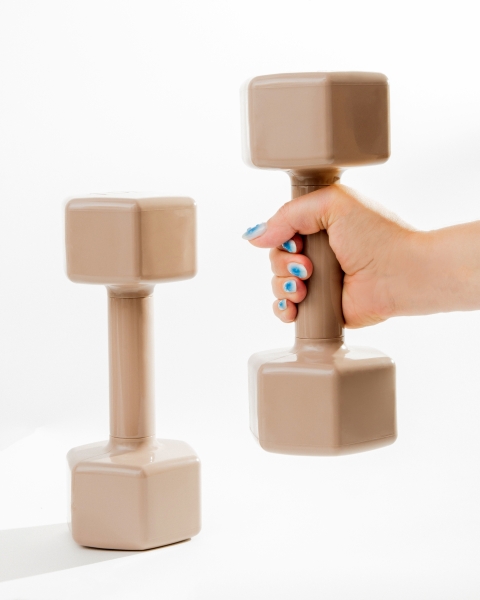I’ve heard that we lose up to 8% of our muscle mass per decade, starting at age 30. What’s the best way to build new muscle in midlife and beyond?
A: Maintaining and building new muscle does become harder as you get older. Even if you work out regularly, you might struggle with, say, opening a pickle jar or lifting a suitcase more than you did when you were younger.
With age, your muscles become less responsive to the things that built them up in the past — namely strength training in combination with a protein-rich diet, said Bradley Schoenfeld, a professor of exercise science at Lehman College in New York.
At the same time, your sex hormones — primarily testosterone for men and estrogen for women — decline as you get older, which also hampers your body’s ability to build new muscle. And chronic inflammation may also increase with age, which can make it harder to repair and build new muscle, since your immune system has to work harder to keep you healthy.
But your biology isn’t entirely your destiny, Schoenfeld said, and strength training can go a long way toward slowing or counteracting these changes. While some muscle loss is inevitable, the rate at which it declines is heavily influenced by lifestyle. Resistance training is like saving for retirement, he said. The earlier you start, the better off you’ll be down the road. Regardless of when you begin, though, it is possible to build new muscle at any age.
You can slow down the clock.
Several studies do suggest that adults lose 3% to 8% of their lean muscle mass per decade starting at around age 30, and even more after age 50. But this decline is as much a result of shifting exercise habits as physiological changes, experts said. The less you work your muscles, the less work they can do and the faster they atrophy.
It can lead to a dangerous downward cycle, said Christopher Miller, a strength and conditioning coach with Mount Sinai’s Department of Rehabilitation and Human Performance. People find working out to be harder, so they do less, and then they find it even harder to work out.
On the flip side, people who strength train continuously into middle and older age tend to hold onto more muscle mass. “Their trajectory is different,” said Anne Friedlander, an exercise physiologist and assistant director of Stanford University’s Lifestyle Medicine Program.
But even if you’ve been inactive until now, strength training can stall or reverse muscle loss.
Whether you’re picking up weights for the first time or looking to improve on your current routine, here’s how to maximize your muscle as you age.
Lift beyond your comfort zone.
It doesn’t matter if you lift light or heavy weights, Schoenfeld said. The important thing is that you regularly push yourself during your strength training workouts. “The last several reps need to be very challenging,” he said — what trainers often call lifting close to failure.
Consistency also becomes more essential as you age, since the older you get, the more your muscles need to be continually challenged to maintain their mass, or build new mass, Miller said.
Older bodies also take longer to rebuild strength and power once they’ve become deconditioned, so the less consistently you stress your muscles, the steeper a decline you’ll experience.
Experts recommend doing at least two, 20- to 30-minute strength training sessions per week.
Eat protein and carbohydrates.
Because your muscles become less responsive to protein over time, you may need to eat more of it to maintain or build muscle mass as you age, and may benefit from tweaking your diet so a higher percentage of your calories come from protein. But don’t skimp on carbohydrates either, Friedlander said, since you’ll need them for energy to push yourself during strength training. Most of the carbs you eat should be complex carbs (think whole grains) for long-lasting fuel. Foods with simple carbs (think fruit) can help quickly boost your energy immediately before, during, or after a workout.
The experts also said that some older adults might benefit from adding a creatine supplement to their diet to help spur muscle growth.
Don’t rush your recovery.
As you get older, it’s important to prioritize recovery time between bouts of strenuous exercise. You can still be active on recovery days, Friedlander said, but be careful not to overwork the muscle groups you most recently trained, since this could backfire: Not only could it impair muscle growth, but it could also increase your chances of injury. A brisk walk or a gentle bike ride can both be good options for an active recovery day.
Along with prioritizing recovery, getting enough sleep and managing your stress level can help to reduce chronic inflammation, which can improve your ability to build muscle.
Finally, be patient, Miller said. It might take longer than it did in the past for you to see or feel new muscle growth, but if you consistently work your muscles hard, it will happen. Your older self will thank you.
This article originally appeared in The New York Times.
